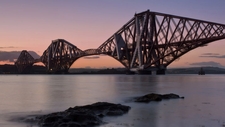Build a Tower or a Bridge

TEKS Objective
Students will combine materials that when put together can do things that they cannot do by themselves such as building a tower or a bridge and justify the selection of those materials based on their physical properties.
Essential Understanding
The student knows that matter has physical properties and those properties determine how it is described, classified, changed, and used.
Science Background
Bridges: Brantacan (website) - Basic information about bridge construction and design that helps students understand how different parts keep the bridge from falling down.
Bridges
Brantacan, www.brantacan.co.uk
Structural Developments in Tall Buildings: Mir M. Ali and Kuong Sun Moon/The University of Sydney (PDF) - Scholarly article offers a brief history of tall buildings and the structural requirements associated with them. It provides insight for teachers before they challenge their students (see Assessment section) to design and build their own towers.
Signature Lesson
Marshmallow Tower Challenge: TED Talks (website) - Challenge student groups to build the tallest tower possible using spaghetti sticks, string, tape and marshmallows.
Marshmallow Tower Challenge
TED Talks, www.marshmallowchallenge.com
Bridges: Discovery Education (website) - Students learn about building techniques to make the strongest and sturdiest bridge, with the goal of engineering a bridge able to hold a certain number of pennies.
- Supporting Lessons
- Extensions
- Assessment Ideas
- Literature Connections
- Related
TEKS - Additional Resources
Supporting Lessons
Exploring Parts and Wholes: Science NetLinks (website) - Students explore systems, in the context of parts and wholes, but analyzing the parts of toys, classroom objects, and objects in the outdoor world.
Exploring Parts and Wholes
Science NetLinks, www.sciencenetlinks.com
Elaboration Lessons and Extensions
The Puff Mobile: PBS Zoom (website) - Students build a wind-driven car from simple materials.
Assessment Ideas
Have students design their own towers or bridges on paper. They must provide an illustration of their structures, list the materials they would use to build it, and justify why they chose those materials.
Literature Connections
Bridges: Amazing Structures to Design, Build & Test. Jonmann, C. (ISBN-13: 978-1885593306)
Building World Landmarks. Greene, Meg (ISBN-13: 978-1567113150)
Additional Resources
Venn Diagram Shape Sorter: Interactivate (website) - Students work independently in class or at home to sort shapes in this interactive Venn diagram.
Venn Diagram Shape Sorter
Interactivate,www.shodor.org
Alien… Assembly Required: PBS Kids (website) - Build an alien using a variety of parts, and discuss how each part helps the alien and what would happen if any parts were removed.
Alien… Assembly Required
PBS Kids, www.pbskids.org
Simple Machines: BrainPop Jr. (video) - Learn about simple machines, which serve as the basis of everyday systems, such as toys and tools.
TEKS Navigation
Grade 2
Need Assistance?
If you need help or have a question please use the links below to help resolve your problem.

Comments